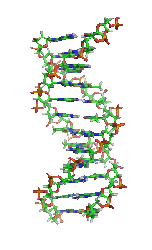Study reveals a potential key to new treatment strategies for Muscular Dystrophy
Newswise May 14, 2012 - Oakland, Calif. A study conducted by Childrens Hospital & Research Center Oakland scientists identifies how skeletal muscle stem cells respond to muscle injury and may be stimulated to improve muscle repair in Duchenne Muscular Dystrophy, a severe inherited disease of muscle that causes weakness, disability and, ultimately, heart and respiratory failure.
The study, led by Julie D. Saba, MD, PhD, senior scientist at Childrens Hospital Oakland Research Institute (CHORI), shows that a lipid signaling molecule called sphingosine-1-phosphate or S1P can trigger an inflammatory response that stimulates the muscle stem cells to proliferate and assist in muscle repair. It further shows that mdx mice, which have a disease similar to Duchenne Muscular Dystrophy, exhibit a deficiency of S1P, and that boosting their S1P levels improves muscle regeneration in these mice. A research report describing the study findings will be published online (http://www.plosone.org/article/info%3Adoi %2F10.1371%2Fjournal.pone.0037218) on May 14, 2012 in the journal Public Library of Science ONE (PLoS ONE).
Skeletal muscle is the biggest organ system of the human body. It is important for all human activity. Muscles can be injured by trauma, inactivity, aging and a variety of inherited muscle diseases. Importantly however, skeletal muscle is one of the few tissues of the human body that has the potential to fully repair itself after injury. The ability of muscles to regenerate themselves is attributed to the presence of a form of adult stem cells called satellite cells that are essential for muscle repair. Normally, satellite cells lie quietly at the periphery of the muscle fiber and do not grow, move or become activated. However, after muscle injury, these stem cells wake up through unclear mechanisms and fuse with the injured muscle, stimulating a complicated process that results in the rebuilding of a healthy muscle fiber.
S1P is a lipid signaling molecule that controls the movement and proliferation of many human cell types. Other scientists had shown previously that S1P can activate satellite cells, but they did not know how this occurred.
We have been studying S1P signaling for many years, states Dr. Saba. In 2003, we published a report demonstrating that fruit fly mutants with defective S1P metabolism were unable to fly because they developed a muscle disease or myopathy that led to degeneration of their flight muscles. Based on that observation, I became convinced that S1P signaling played an important role in muscle stability and homeostasis, not just in flies but in mammals, including humans.
Dr. Sabas team has discovered how S1P is able to wake up the stem cells at the time of injury. It involves the ability of S1P to activate S1P receptor 2, one of its five cell surface receptors, leading to downstream activation of an inflammatory pathway controlled by a transcription factor called STAT3. They showed that S1P is rapidly produced in the muscle immediately after injury, leading to an S1P signal. S1P, acting through S1P receptor 2, leads to activation of STAT3, resulting in changes in gene expression that cause the satellite cell to leave its sleeping state and start to proliferate and assist in muscle repair.
These findings are important especially for certain muscle diseases or myopathies that can affect children, states Dr. Saba. The most common and one of the most severe myopathies is Duchenne Muscular Dystrophy, a disease that affects young boys and often leads to death from respiratory and heart failure in a patients twenties. Although patients with Duchenne Muscular Dystrophy start out life with enough satellite cells to repair the patients degenerating muscles, over time the satellite cells fail to keep up with the rate of muscle degeneration. We found that mdx mice, which have a disease similar to Duchenne Muscular Dystrophy, are deficient in S1P. We were able to increase the S1P levels in the mice using a drug that blocks S1P breakdown. This treatment increased the number of satellite cells in the muscles and improved the efficiency of muscle regeneration after injury.
If these findings are also found to be true in humans with Duchenne Muscular Dystrophy, it may be possible to use similar approaches to boost S1P levels in order to improve satellite cell function and muscle regeneration in patients with the disease. Drugs that block S1P metabolism and boost S1P levels are now being tested for the treatment of other human diseases including rheumatoid arthritis. If these studies prove to be relevant in Duchenne patients, it may be possible to use the same drugs to improve muscle regeneration in these patients. Alternatively, new agents that can specifically activate S1P receptor 2 could also be beneficial in recruiting satellite cells and improving muscle regeneration in muscular dystrophy and potentially other diseases of muscle.
This work was supported by grants from the Muscular Dystrophy Association, the National Institutes of Health and a fellowship award from the California Institute of Regenerative Medicine.
Read the rest here:
Scientists Discover Clues to Muscle Stem Cell Functions
